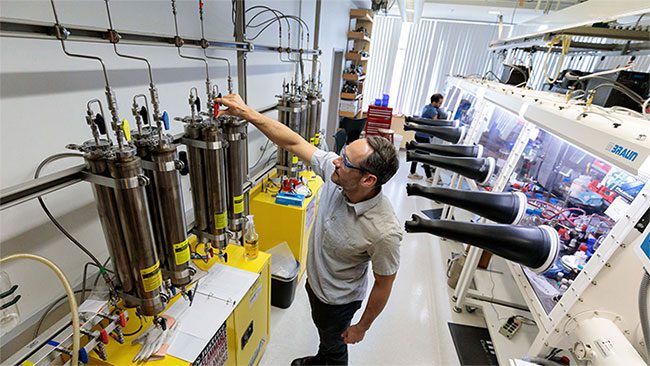Scientists at the University of Chicago have discovered a method to create a material that resembles plastic but conducts electricity similarly to metals.
The research was published on October 26 in the journal Nature. The scientists demonstrated how to create a type of material that possesses disordered molecular fragments while still conducting electricity effectively.
This finding contradicts all the known rules regarding electrical conductivity. “In principle, this opens up the design of a completely new type of conductive material that is easy to shape and durable under everyday conditions,” said John Anderson, the study’s author and an Associate Professor of Chemistry at the University of Chicago.

Scientists discover a method to create a material that resembles plastic but conducts electricity like metals.
To date, the oldest known conductive materials are metals: copper, gold, and aluminum. These materials are more flexible and easier to process compared to traditional metals. However, the issue is that they are unstable and can lose their conductivity when exposed to moisture or high temperatures.
Essentially, both organic and traditional metal conductors share a common characteristic. They are made up of rows of atoms or molecules that are tightly aligned.
This alignment allows electrons to move easily through the material, similar to cars on a highway. In fact, scientists believed that materials must have straight rows. This order facilitates effective electrical conduction.
The research team experimented with several materials discovered years ago. They arranged nickel atoms like pearls into a molecular chain made of carbon and sulfur. The results showed that this material conducts electricity easily and powerfully. Furthermore, it exhibits high stability.
Notably, the molecular structure of the material was disordered. The researchers sought to understand how the material could conduct electricity. After experiments, simulations, and theoretical studies, they concluded that the material forms layers. Even when these layers are disordered, electrons can still move horizontally or vertically, as long as they make contact with one another.
The scientists stated that this discovery suggests a fundamentally new design principle for electronic technology. The new material can be created at room temperature. It can also be used when there is a demand for a device or components that need to withstand heat, acid or alkali, or high humidity.
The team is also exploring different forms and functions that the material could create. “We believe it is possible to simulate the material in 2D or 3D forms. Or even introduce other functions by adding different linkers or nodes,” the research group stated.


















































